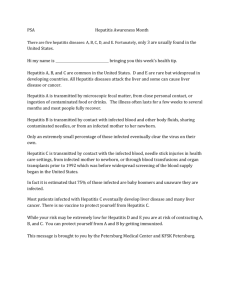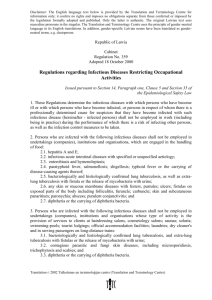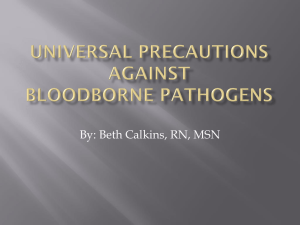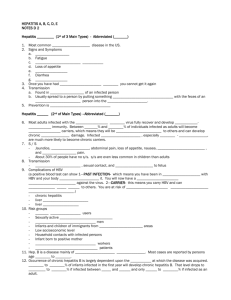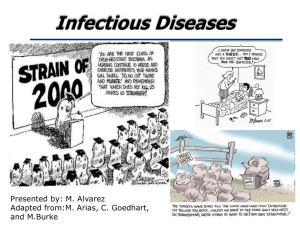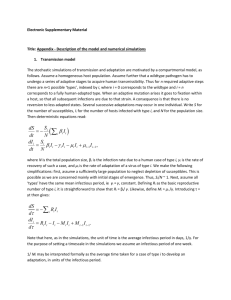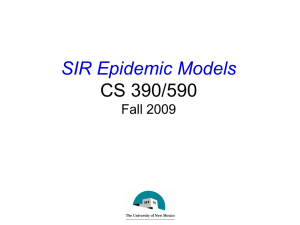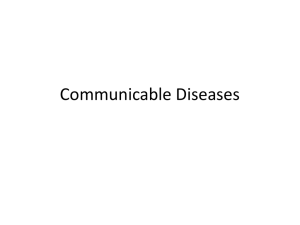Blood Born Pathogen Refresher Quiz
advertisement
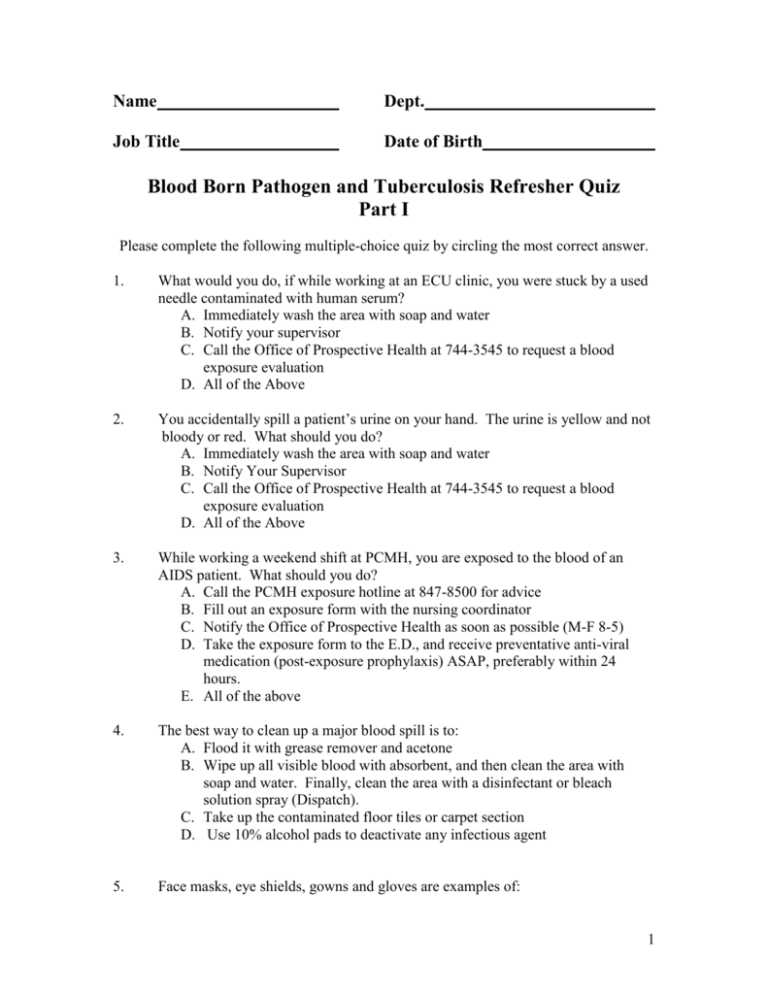
Name Dept. Job Title Date of Birth Blood Born Pathogen and Tuberculosis Refresher Quiz Part I Please complete the following multiple-choice quiz by circling the most correct answer. 1. What would you do, if while working at an ECU clinic, you were stuck by a used needle contaminated with human serum? A. Immediately wash the area with soap and water B. Notify your supervisor C. Call the Office of Prospective Health at 744-3545 to request a blood exposure evaluation D. All of the Above 2. You accidentally spill a patient’s urine on your hand. The urine is yellow and not bloody or red. What should you do? A. Immediately wash the area with soap and water B. Notify Your Supervisor C. Call the Office of Prospective Health at 744-3545 to request a blood exposure evaluation D. All of the Above 3. While working a weekend shift at PCMH, you are exposed to the blood of an AIDS patient. What should you do? A. Call the PCMH exposure hotline at 847-8500 for advice B. Fill out an exposure form with the nursing coordinator C. Notify the Office of Prospective Health as soon as possible (M-F 8-5) D. Take the exposure form to the E.D., and receive preventative anti-viral medication (post-exposure prophylaxis) ASAP, preferably within 24 hours. E. All of the above 4. The best way to clean up a major blood spill is to: A. Flood it with grease remover and acetone B. Wipe up all visible blood with absorbent, and then clean the area with soap and water. Finally, clean the area with a disinfectant or bleach solution spray (Dispatch). C. Take up the contaminated floor tiles or carpet section D. Use 10% alcohol pads to deactivate any infectious agent 5. Face masks, eye shields, gowns and gloves are examples of: 1 A. B. C. D. Engineering controls Personal Protective Equipment Work Practices Hazard Gear 6. There is no vaccine for Hepatitis C. A. True B. False 7. “Treat all potentially infectious body fluids as if they are infected.” That principle is known as? A. A work place practice B. A standard precaution C. An engineering control D. A hospital policy 8. If you are exposed to HIV infected human blood/body fluid through a needle injury, what are your chances of becoming infected? A. Greater than 15% B. Less than 1% C. Around 10% 9. Which of the following is NOT considered a risk factor for Hepatitis C? A. IV drug use B. Donating blood through the American Red Cross after 1990 C. Body piercing D. Shared nasal cocaine use 10. Which of the following is an example of engineering control? A. Hand washing B. Sharps disposal containers C. Face shield D. Non-recapping needles 11. You received the three shot series for Hepatitis B immunization and demonstrated immunity on a follow-up blood test. How long will you be considered immune? A. Life long B. Until exposed to Hepatitis B C. Until repeat blood test 12. You have been exposed to a Hepatitis C positive source patient, by needlestick injury. What preventive measures can be taken? A. Receive immune globulin injections B. Receive Hepatitis C immunization C. None, there is no effective preventative treatment. 2 Name Dept. Job Title Date of Birth Tuberculosis Quiz Part II 1. How is Tuberculosis Spread? A. When an infected person coughs B. When an infected person sings C. When an infected person sneezes D. When an infected person spits E. All of the above 2. What are the symptoms of TB? A. Chronic Cough B. Fever C. Night sweats D. Coughing up blood E. All of the above 3. What should be done if a healthcare worker suspects a patient of having TB? A. Place a mask on the patient B. Give the patient tissues to contain coughed secretions C. Move the patient from the waiting are to a negative pressure room D. All of the above 4. What personal protective equipment should be used to protect yourself from airborne TB particles? A. Gown B. Gloves C. Properly fitted respirators D. Shoe covers 5. How often should healthcare workers be tested for TB? A. At least once a year B. Only if symptoms develop C. After an exposure to an infectious patient D. A & C E. All of the above 6. What is the best form of respiratory protection for a man with a full beard to use when examining a patient who may have an airborne infection, such as Tuberculosis? 3 A. Powered air purifying respirator (PAPR) B. N-95 full mask C. Ask a colleague to see the patient 7. A 60 year old man, who is HIV positive, presents to clinic with chronic cough and blood in his sputum. What should be done to prevent infection transmission? A. Place mask on patient when he is sent to x-ray B. No infection control measures are needed, as he has not been diagnosed yet C. Providers will don N-95 mask or PAPR while examining the patient D. Await results of sputum culture before adopting infection control measures E. Place patient in negative pressure exam room if available F. Choices: A, C, & E G. Choices: B & C 8. To prevent exposure of staff and patients in the clinic, when should a patient with fever, cough, and hemoptysis be handled as if they are infectious? A. When sputum cultures grow Mycobacterium Tuberculosis B. As soon as the history of suspicious symptoms is elicited C. After infectious disease has been consulted D. At the direction of the attending physician 9. Your respiratory protection (mask or Powered Air-Purifying Respirator) can be used to prevent exposure to infectious agents, in addition to TB. These include: A. Severe Acute Respiratory Syndrome (SARS) B. Smallpox C. Anthrax Spores (on patient contaminated with a suspicious white powder) D. Meningococcus while intubating a meningitis patient E. All of the above 10. How often should the user of a N-95 mask for TB protection perform a seal check to ensure no air leaks around the edge of the mask. A. Annually B. If gained more than 20lbs. since fit testing C. Prior to each use 4
